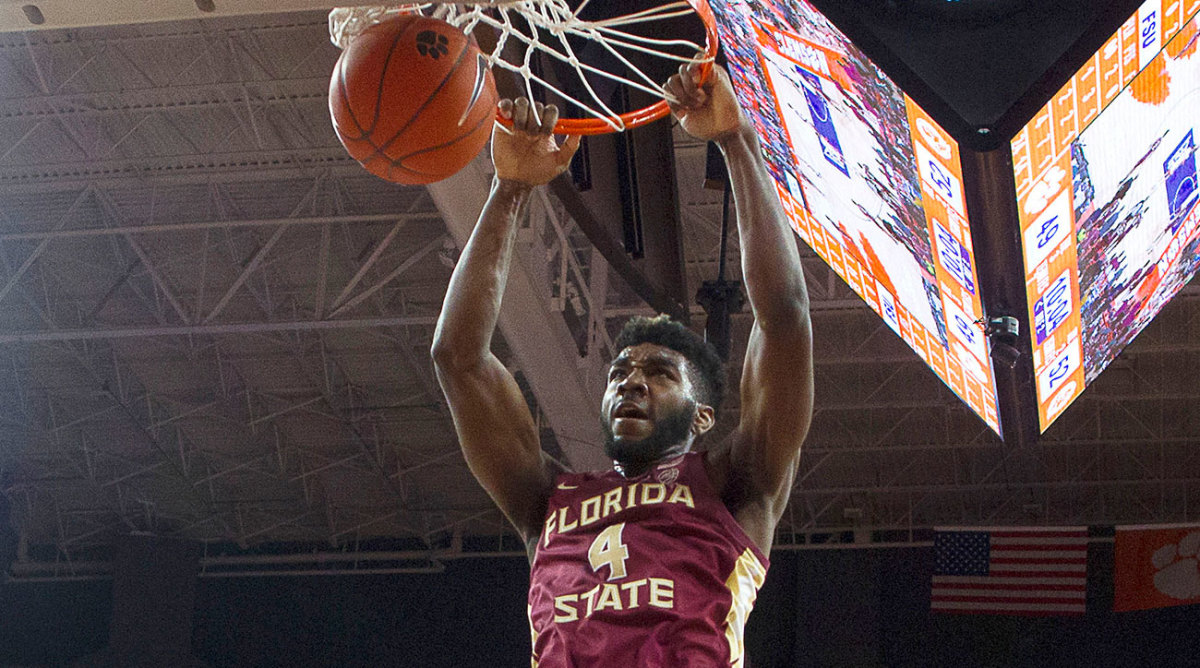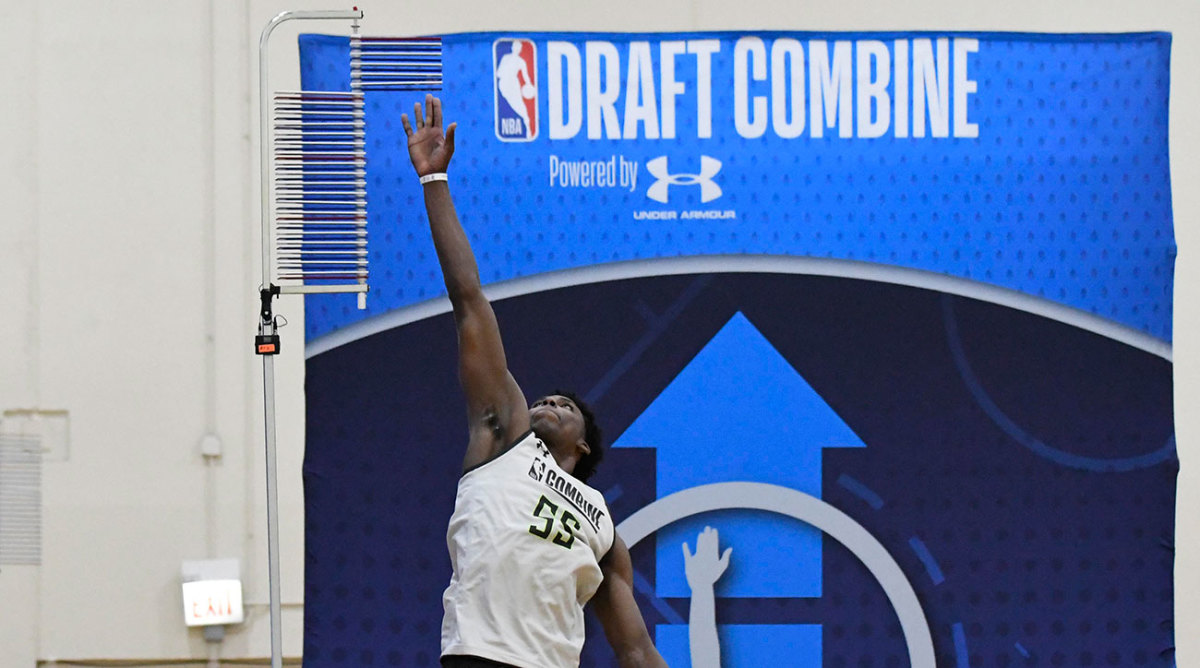NBA Draft Buzz: What Will Golden State Do? It Might Just Pick
Welcome to The Crossover’s NBA Draft newsletter, bringing you exclusive content, intel and analysis as the 2020 draft draws near. Sign up here to receive more stories like this.
You might say the 2020 draft is now one week away from being one week away. And while there’s less concrete information than usual circulating at this point in time—teams need the still-being-negotiated salary cap numbers before they can make trades in earnest—some recurring themes and pieces of information have come up in my talks with a range of league sources over the past few weeks.
• It’s well known at this point that Minnesota and Golden State are open to trading the No. 1 and No. 2 picks, respectively. Unless either team is able to finesse a deal for a star, trading back in the lottery seems like the most reasonable approach. But for a suitable trade to materialize, both teams will have to be realistic about their asking price, given the generally tempered level of enthusiasm surrounding top prospects in this draft. There’s still time for both teams to work the market, and this might be a situation that runs down to the end. But at this point in time it would surprise nobody if both teams ultimately pick for themselves.
• The Hornets are widely believed to be targeting a big with their lottery selection at No. 3. But to land James Wiseman, Charlotte will likely have to get serious about trading up, given the likelihood he’ll be unavailable to them otherwise. What exactly they’d be willing to trade to do that is unclear, and it’s worth noting the other player I’ve consistently heard linked to Charlotte is Onyeka Okongwu. Okongwu makes more sense in the event the Hornets find a way to trade back, but if they’re unable or unwilling to make a move for Wiseman, he’s a player to keep an eye on. There remains a common thought that the Hornets are not enamored with LaMelo Ball.

• Expect Patrick Williams to be drafted before Florida State teammate Devin Vassell and end up somewhere inside the top 10. Although Williams wasn’t consistently productive last season, his youth and long-term potential have been advantageous as teams weigh upside plays early in the draft, and his raw skill set is generally seen as a positive. If he indeed sneaks up several spots on draft night (we last projected him to San Antonio at No. 11), it'll create a domino effect with the players left on the board.
• Perhaps unsurprisingly, given the diversity of opinion in how teams are evaluating this draft class, a wide range of lottery teams have come up in conversations as candidates to trade back. In addition to the Warriors and Timberwolves, the Bulls (No. 4), Cavs (No. 5), Hawks (No. 6) and Suns (No. 10) are teams to keep an eye on. This situation is still fluid and will likely remain that way until the salary cap and luxury tax for next season are finalized and teams can operate on firm ground.
Further down the board, I’m told the Mavericks have continued to make pick No. 18 available, in search of immediate help. Rival teams expect the Celtics to try to consolidate two of their three first-round selections (No. 14, 26 and 30) in some form.
• The expectation among teams is that Stanford’s Tyrell Terry, who has steadily risen over the course of the past few months, will likely be selected somewhere in the mid-to-late teens.
• Lastly, Daryl Morey’s quick move from Houston to Philadelphia should allow you to infer that the 76ers will probably not be married to actually using all or any of their five draft picks, beginning with No. 21.
***
- Jeremy Woo’s latest Mock Draft
- Tom Crean on Anthony Edwards
- Why LaMelo is the draft’s swing factor
- How to raise your draft stock in a pandemic
- What should the Warriors do with No. 2?
***
Prospect Close-Up: Patrick Williams
Williams has as much upside as most of the other players in the lottery, with a great frame and base set of skills that should add versatility on both ends of the floor. He’s not ready for major minutes and a lot of his value involves projection, but as the youngest college player in the draft, it’s easy to take an optimistic tack, so long as a team can afford him time to develop. He’ll hold up fine defensively with his body type and mobility and should be able to guard slower wings as well smaller bigs. Williams’s offensive future is less clear and tied to how well his handle develops, but he’s shown encouraging signs as a shooter and has enough feel to fit in without issue. For a team that doesn’t need its first-round pick to play immediately, he looks like a worthy project and easy lottery option.
Read more in SI’s latest Big Board
***

The (lack of) value of this year’s combine testing
I addressed this in brief with a series of tweets on Monday morning, but a vast majority of team personnel I’ve discussed the matter with have expressed skepticism over the utility of this year’s combine testing and measurements, which have begun to trickle out on Twitter over the past week. This is less the fault of the NBA and more a built-in issue tied to the fact that participating prospects have conducted their combine process at various team facilities around the country and under the purview of different staffers at each location. Typically, athletic testing takes place over the course of two days on site in Chicago and is supervised by the same group each day using the same equipment. This year, the circumstances amid a pandemic necessitated that this take place separately, to help limit travel demands and ensure maximum safety.
A number of prospects reportedly set records in performance testing this season, and perhaps more importantly, the pieces of information that already leaked publicly hold up unusually well with the past few years of combine data. Another factor to keep in mind is that thanks to the protracted predraft process, players had more time than ever to prepare physically for these combine-specific drills, which logically should lead to improved individual results from those on the elite end of the athletic spectrum. We can still take away some basic things from this year’s testing—the simple matter of who tested well and who didn’t, how players tested relative to each other, true heights and weights—but for the most part, it would be a mistake to overvalue the raw numbers.
One high-ranking Western Conference executive recently made the point to me that it might be more beneficial in future drafts to put players through a more randomized set of athletic tests and drills that could better quantify their actual athletic ability. In non-basketball terms, think of the academic drills like an essay test where you know the exact questions in advance (leading to situation-specific preparation) versus a pop quiz that might assess overall comprehension in a broader sense (and ask test-takers to be less rigid and more responsive). That’s certainly not my realm of expertise, but it’s food for thought.
